1952 – 1994
Also known as Carla C, Carla Costa, and Pallas Athena
When World War II had ended in 1945, the seafaring nations in the world had all lost some of their most prestigious vessels. Britain’s Empress of Britain was gone, as was Germany’s Bremen and France’s Normandie. The French tried to maintain the North Atlantic service with the ageing Liberté and Île de France, but as their main competitors were ships like Britain’s Queen Mary and Queen Elizabeth, the leading French shipping firm Compagnie Générale Transatlantique – or the French Line – realised that putting new vessels in service was urgently required. On the other side of the Atlantic, the Americans had already started a giant project, building the powerful 53,000-tonner United States which would become the fastest ocean liner through history. The French had to follow if they wanted to stay in business.
In the early 1950s the design plans for two new French vessels were complete. They were supposed to be named Flandre and Antilles and they would both be put on the Caribbean cruise service. Both ships had a great percentage of aluminium in their structures, which resulted in two quite light vessels at roughly 20,000 gross tons each. On October 31, 1951 the Flandre was launched, six months after her sister had been.
The third vessel that assisted Liberté and Île de France was the ageing De Grasse. She had problems in keeping up with her two running-mates, so the French Line decided that the first of the new duo, the Flandre – undergoing final fitting out at the Ateliers et Chantiers shipyard in Dunkerque – would replace her and enter North Atlantic service on the summers together with the other two most distinguished liners and serve as a cruise ship during the winter-months. The Antilles would remain completely in her intended service.
On July 23, 1952 the black-hulled Flandre steamed out of Le Havre on her maiden voyage. She was – together with her almost identical sister – the largest French vessel to enter service after the war. During the crossing, the Flandre encountered some electronic problems, resulting in her being 22 hours late for New York. Temporary repairs had been carried out when at sea, but as the Flandre came into New York, she broke down again when her generators failed her. The ship was unable to raise her anchors or even blast the whistle. In her celebration flags, she was towed to pier 88 awaiting a massive overhaul. Not until the next year’s mid-April did the Flandre resume her North Atlantic service. By this time, the dockers at New York had nicknamed her ‘The Flounder’.
In consequence to the other French Line ships and the company’s history, the Flandre’s interiors were of a very high standard. The first class-section was air conditioned in all public rooms and in nine out of ten staterooms. One of the main features, the main salon, was convertible into a conference theatre. Alongside the ship, glass-enclosed promenade areas were available for the first class passenger.
The standard was high also in Tourist Class, but naturally, first class was superior. All tourist class public rooms were air conditioned, but none of the staterooms. There were several different varieties of public rooms to choose from when you travelled in Tourist Class – the main salon, the winter garden, the reading and writing room and the spacious dining room on A-deck.
The Flandre continued successfully on her combined North Atlantic-/Caribbean-service, and as she performed very well on the distinguished Le Havre-New York service, she was entirely transferred to this route in 1958. There, she continued until 1962 when the new France replaced her after some time in service alongside each other. Not being required on the North Atlantic, the Flandre would be returned to the kind of service she was originally intended for – all year cruising. As she replaced the Colombie, she went in this service alongside her sister Antilles, having her funnel heightened and her hull painted white.
In 1968, the French Line faced severe financial troubles as the passengers on the North Atlantic reverted to the fast airliners; almost making the shipping lines obsolete. However, the Flandre did not end her days here, but she was sold to the Costa Armatori Line of Genoa, Italy, replacing their lost Fulvia. By the time the Flandre entered service under her new owners, she had been renamed Carla C. During the refit she went through prior to entering service, she was rebuilt into a one-class luxury cruise ship. An exterior change was that of her funnel which had been entirely reshaped with air vents at the front top. The extensive refit cost a staggering $12,000,000. But before the Carla C entered cruise service, she was chartered by Princess Cruises – owned by P&O today – making some cruises as their Princess Carla, but she was never officially renamed. It was during this time a set of producers came with the idea of the popular television-series ‘Love Boat’ on board the Carla C – or Princess Carla. Consequently, the first scripts were written on board the ship.
In the spring of 1970, the Carla C was back in Costa Armatori-service. Her new schedule consisted of weekly cruises out of San Juan. Until 1974, she carried on with this highly popular service, and in early June this year, she went to Amsterdam to have her old steam engines removed and replaced by more economical Diesel ones. The ex-Flandre did not disappoint her Italian owners and she served them without problem throughout the Seventies. In 1986, she was renamed Carla Costa, but no other changes regarding her occurred. However, in 1992 she was transferred to the Greek Epirotiki Line, renamed Pallas Athena running mainly seven-day cruises from Athens to the Aegean isles and Turkey.
On March 23, 1994 the Pallas Athena was disembarking passengers at her Athens-dock when a fire started in an empty stateroom. Fortunately, all the passengers were off the ship when the fire suddenly developed badly and spread quickly. The superstructure of the ship collapsed on itself, as did the funnel. After the devastating fire had been put out, the Pallas Athena was towed to the outer areas of the harbour and declared a total loss. On Christmas Day the same year, the ex-Flandre arrived at the Aliaga ship-breaking company in Turkey for demolition. Not until 1995 was the last pieces of her hull lifted out of the water. The last of a once very distinguished trio had been laid to rest.
Specifications
- 599.7 feet (182.9 m) long
- 80.3 feet (24.5 m) wide
- 20,469 gross tons
- Steam turbines powering two propellers, later converted to diesel engines
- 22 knot service speed
- Passenger capacity of 1,663 people

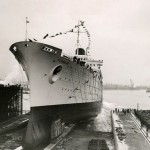
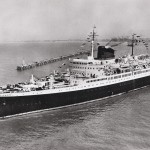
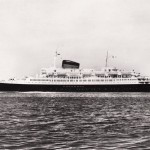
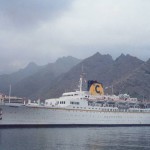
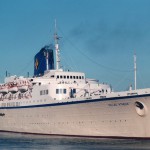
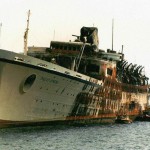
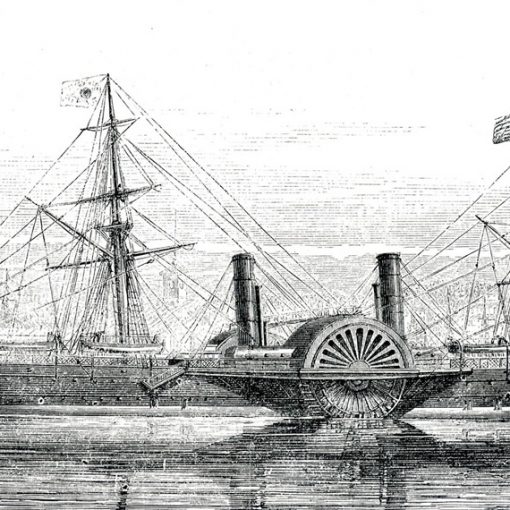
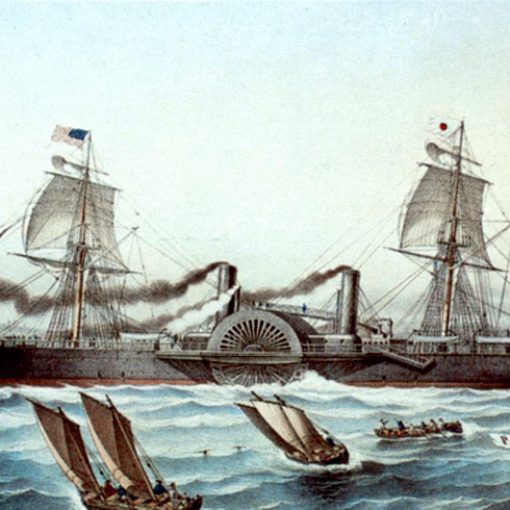
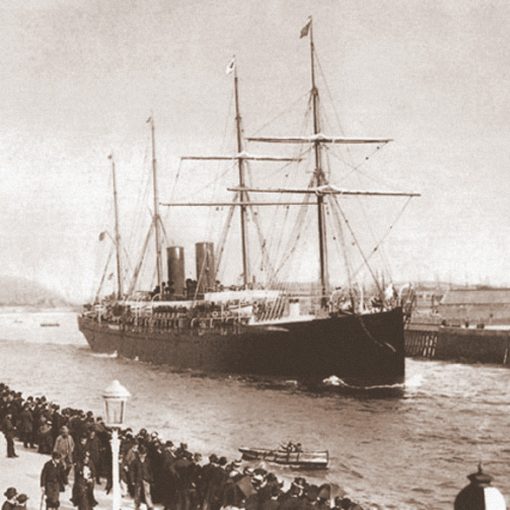
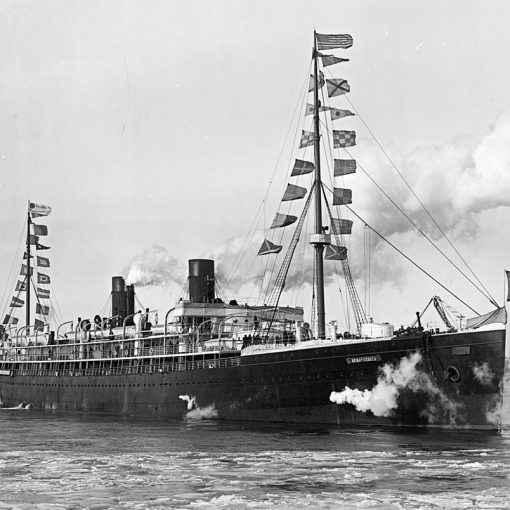
2 thoughts on “Flandre (II)”
I sailed on SS Flandre in 1953 from Southampton to New York
My good friend Alan Bates sailed on this ship from Southampton on June 16th 1953, arriving New York 22nd June. He maintains that it was the maiden voyage, and his description of the voyage is exactly as reported for the maiden voyage, but on wiki and elsewhere dated July 1952. Something not quite right there.